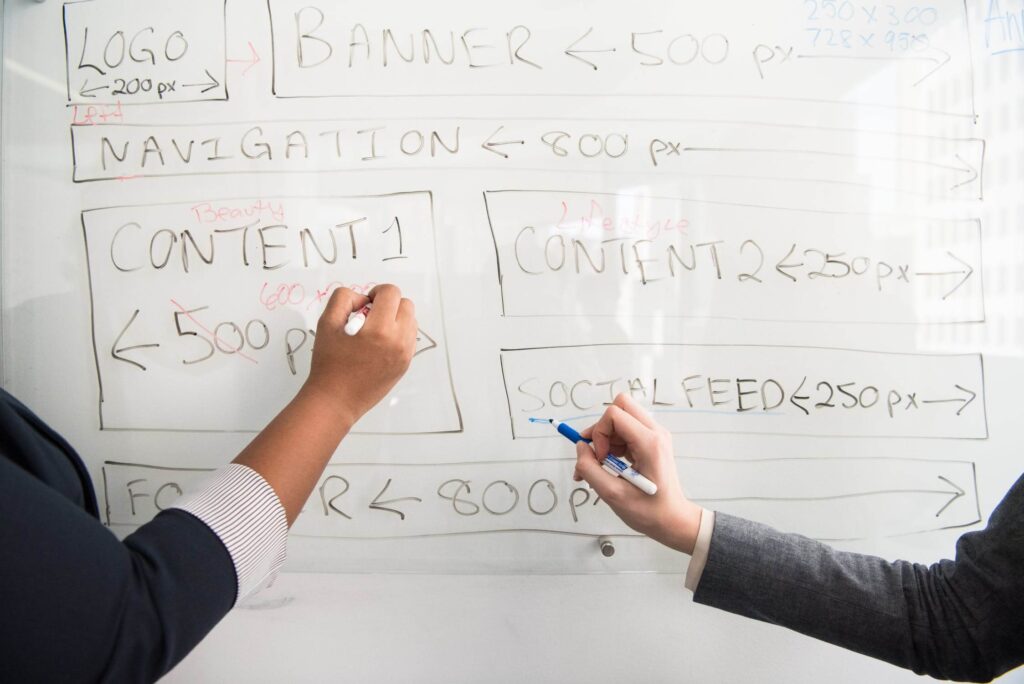If you want to boost your SEO, you need to start with content. That’s something you’ve probably heard before. The challenge for many businesses is regularly creating the right sort of content that provides value to your target audience.
This is where the idea of content mapping comes into play.
Content mapping is nothing new, but it is still as relevant today as it was when the practice first became popular a few years ago.
If you are struggling to create valuable content on a regular basis – content that leads your target customers through your sales funnel and attracts the links and shares you need to boost your position in the SERPs – this could just be the guide you need right now.
A Quick Overview of Content Mapping
So what exactly is content mapping?
In brief, it is a way to plan your content strategy so you create the right content for the right people and make sure they access it at the right time.
If that sounds complicated, it isn’t – you just need a bit of structure.
The basic premise is that if you know who your customer is and what they want at a specific point in the buyer journey, you can provide them with that content to help them progress down the sales funnel.
A Question of Intent
At its heart, content mapping comes down to the issue of the intent of your customers at the different stages of the buyer journey.
Imagine someone lands on your website for the first time. They have no idea what your business is, and only a vague idea of what you do. Are you going to put pressure on them to invest in your product or service right away?
Unlikely. They are not ready to buy. Their intent is not to buy yet.
So what is their intent? They are probably curious. They have probably landed on your website with a specific problem they are aware of, and they are now wondering how you can solve that problem.
Pushing them to buy before they are ready will only damage your relationship at this crucial early stage, forcing them to leave your site – maybe never to return.
You Need to Craft the Right Message
In order to keep those potential customers on your site – and help them to progress down the sale funnel – you need to learn about your customers and, crucially, what they want.
What matters to them? What problem are they facing? What are their needs and desires?
Only when you know this can you craft your message to meet their specific needs at their specific stage in the journey.
How to Get Started
As the name implies, this strategy involves creating a map. You need to know who you are creating the content for at different stages of your sales journey.
Look at all your customers and prospects. Divide them into groups and try to create three specific groups based on the stages of where they are in the buyer journey – the process they go through up until they make a purchase.
Awareness is the first stage. These are the customers who have only recently identified their problem and are now looking for a solution. You can provide them with what they want using educational content and information about the pain points they feel, what is causing them and providing them with solutions.
The next stage is Consideration. They are now looking for solutions to their problem, and they may have a few to choose from. This is where you provide them with content about your product and how it is different to help them to educate themselves. As a result, you are helping them to make a smarter choice. This type of content will focus on brochures, video demonstrations, comparison charts and webinars.
The final stage is the Decision stage. They are now ready to choose their solution, and they want content about how to become a customer and the steps they need to take. Here, you need to provide them with product comparisons, success stories, free trials, consultations and pricing to help them make their decision.
Create Personas for Each Stage
To help you create the right type of content, you should create buyer personas for each stage. This is where you create a person with a name, gender and age, and use them as the embodiment of your target customer for that particular group.
List as many details as you can, including their personality, the problem they have, how they want to solve their problem, how your business will stand out to them, why they would want to choose you over the competition, and more.
Create Your Content
Once you have planned out your content map, it’s time to create the content. For each piece of content you create, decide on the persona for the content and the stage of the buyer journey they are at.
Start by looking at your existing content. Are their gaps? What is missing? Fill those gaps with content that each persona needs.
Look at the type of content your personas prefer. Blogs are just one type of content, and you can also create infographics, videos and case studies. You want to choose the content that appeals to your target audience at that particular point in their journey.
Hold a brainstorming session to come up with content ideas. Look at your competitors and see what they are doing. Ask your sales team for the most common questions they have. Use social media, forums, question sites and blog comments to help you.
Distribute Content
Once you have created your content, you need to get it in front of them. Publish it on your website first, then distribute it.
Which social media sites do they hang out on? Promote your content there. Use paid social ads and create awareness. This is usually aimed at people right at the top of your funnel.
For people further down the funnel, they already know who you are and what you do, so your website is where you will have the more detailed content. Here you can focus on answering their questions and keeping them on your site.
Build Stronger Relationships
Even when you get a conversion, don’t stop there. Send them content directly and build your relationship with them. Reassure them that they made a great decision in choosing your solution. It’s easier to keep your existing customers than to find new ones.
Optimise Your Process
After you have done this, rinse and repeat. Find out what is working, what you need to improve, and use your analytics to track your visitors from the first time they visit your website to when they convert.
Gather feedback from them directly, find out which content they want, and learn from it. Then keep improving your content, and keep on attracting new customers to your solution.
Renew Your Content Strategy
Content mapping is a highly effective way to give your content strategy some structure to ensure that whenever you create content, you are not wasting your time.
By planning out your content strategy carefully using the principle of content mapping as your guide, you will put the focus of your content on the customer rather than your business. This will ensure you are creating more valuable content that solves their problems and builds trust – which will generate more links and boost your SEO as a result.
If you think you may need a helping hand when it comes to boosting your SEO and content strategies, please do not hesitate to get in touch and a member of the team will be more than happy to discuss your needs.



